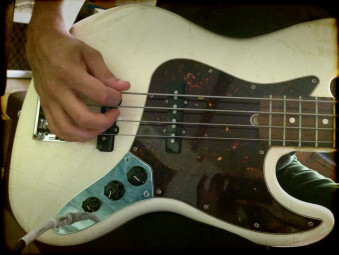After two articles dealing with the pre-requisites for any bass recording worthy of the name, today we will dive into the heart of the matter with the direct recording of a bass guitar.

Direct injection
Direct recording consists in tracking the electrical signal from the instrument exclusively, not the sound coming from a bass amp. To make such a recording you need to consider a very important technical detail of the bass in question: is it passive or active?
If it’s active, in other words it features low impedance pickups and, hence, has a built-in preamp, you can connect it directly to a line input of your audio interface to make a direct recording. On the other hand, if the bass is passive, you will need to use a so-called direct injection box (aka DI box), before it goes into a preamp and then your soundcard. Do note that there are some digital interfaces that feature an instrument input, which allows you to connect a passive bass directly to it without the need of a DI box. Furthermore, certain bass amps feature a DI output, which spares you from having to use an external DI box.
But what’s so interesting about direct recording, you ask? Well, it has two main advantages. First of all, the signal will sound “cleaner, ” “drier, ” better defined if you will, more accurate than the sound coming out of a bass amp. Plus, this take will allow you to do some reamping afterwards! In fact, under certain conditions, the signal thus recorded can be sent to an amp. This means you have the possibility to modify the amp or recording settings (mic type, position, preamp, pedals and/or hardware processors used, etc.) afterwards, depending on the sound you want to achieve. Isn’t that nice? If you want to learn more about reamping, I recommend you to read this excellent article written by my good friend Red Led.
On track
To close this episode, here are the direct recordings of the same audio clips I used last week:

- 01 Bass Finger Ghost 00:23
- 02 Bass Finger GhostLess 00:23
- 03 Bass Pick 00:23
- 04 Bass Pick AD 00:23
- 05 Bass Pick Bridge N Tone Off 00:23
Do remember that the differences in the samples are due to the following changes:
- The bass line is played using a finger picking technique
- The melody is played with the fingers, but this time without “ghost notes”
- The bassist used a pick
- Again, a pick is used, but instead of playing the E and A strings, the riff is played on the A and D strings
- Back to the E and A strings with a pick, but with the bridge pickup off and the tone set to minimum
As you can see, these recordings can be used as is within a music production. However, they are relatively “neutral, ” for lack of a better word. To get something with more character, more energy, more “fullness” you will need to go through a bass amp. Fortunately, nothing stops you from having the best of both worlds: the definition of a direct recording and the substance provided by a bass amp. But that’s something we’ll address in the next article…
Download the audio clips (in FLAC format)

